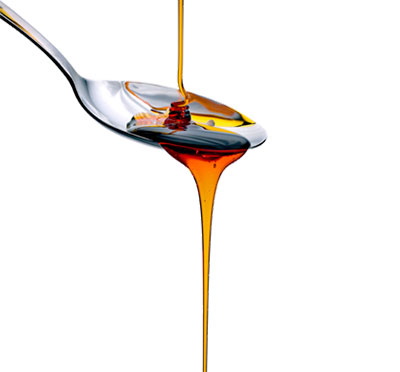Among its own production lines, El Bahiense has a modern plant for the production of its caramel color, where -through state-of-the-art technology and experienced professionals- the safest and most reliable final product on the market is achieved.
The productive capacity of our plant guarantees permanent supply to current and potential customers, thanks to the permanent investment in equipment and machinery involved in the production process.
The products we make are distributed with our own transport fleet. This gives us the specific differential advantage of being close to our clients, being the first consultation option and responding quickly to an unplanned request.
Custom development
We offer solid technical support and our laboratories to carry out developments of Specific colors that adapt to the needs of each individual client.
Distribution
We have different presentations, to adapt to the needs of each client. Our products are packed in 27 kg drums, 260 kg drums, 1,300 kg containers, or delivered in bulk by stainless steel tank trucks.
Our large storage capacity guarantees a permanent stock and the delivery of the product in a timely manner.
Class IV caramel color
It is obtained by treating sugar with heat and ammoniacal sulphite.
We have both double or single concentration:
Simple concentration:
The dye of simple concentration has less intensity of color and higher viscosity.
Caramel color S-110
Soluble coffee, alcoholic beverages, snacks, liqueurs and bitters, essences and flavors, baked products, cookies, wafers and ice cream cones, cocoa spread, fancy sugar, balanced food.
Caramel color S-195
Alcoholic beverages, snacks and bitters, bakery products, cookies, wafers and ice cream cones, essences and flavors, dairy products, ice creams, sweets and jams, non-protein sauces, mustard, balanced food.
Caramel color S-250
Baked goods, wafers and cones for ice cream, soy-based sauces, dressings, soups, essences and flavors, dairy products, sweets and jams.
Caramel color S-370
Essences and flavors, baked goods, wafers and cones for ice cream, soy-based sauces, dressings, soups, dairy products, sweets and jams.
Double concentration:
The double concentration color has a greater intensity of color.
Caramel color D-420
Alcoholic beverages, snacks, liqueurs and bitters, essences and flavors, cocoa spread, fancy sugar, balanced food.
Caramel color D-460
Alcoholic beverages, snacks, liqueurs and bitters, essences and flavors, cocoa spread, fancy sugar, balanced food.
Caramel color D-474
Alcoholic drinks, alcoholic beverages, soluble coffee, essences and flavors, dairy products, ice creams, sweets and jams, non-protein sauces, mustard, fancy sugar, cocoa spread, balanced foods.
Caramel color D-484
Alcoholic beverages, snacks, liqueurs and bitters, essences and flavors, soluble coffee, cocoa spread, fancy sugar, balanced food.
Powdered caramel color
For greater practicality, we have the powder version, which quickly dissolves, obtained by drying the Class IV caramel color Flash Dryer.
Juices and / or concentrates of powdered fruit, Baked Products and / or Premixes, Soluble coffee, Powdered and / or granulated essences and flavors, Powdered dairy products and / or desserts, Cocoa spread, Products based on cocoa powder.
Class I caramel color
Class I caramel Color is the least reactive of all types of colors since it doesn´t use a catalyst.
Caramel color CI-60
Whiskeys, alcoholic beverages, snacks and bitters, essences and flavors, baked goods, wafers and cones for ice cream, soy-based sauces, dressings, soup, dairy products, sweets and jams.
Caramel color CI-129
Whiskeys, alcoholic beverages, snacks and bitters, essences and flavors, baked goods, wafers and ice cream cones, soy sauce, dressings, soups, dairy products, sweets and jams.

Qualities
4-MEI
As a result of our constant research and new developments, we have Caramel Color under 4-MEI.
4-Methylimidazole (4-MEI or 4-MI) is a by-product formed in certain foods during heating. It is a natural compound of caramel color and roasted food. We have managed to obtain levels below 25ppm of this compound in our colorant, complying with world standards.
Viscosity
The low viscosity of our colorants ensures greater staining power.
This is because they are easier to handle, and they generally dissolve more quickly, as well as having greater stability and shelf life.
Coloring power
The color of each type of Caramel color is determined by the intensity of its own color.
Our technical department can guide you in identifying and choosing the most suitable caramel color for your product
Uses
The main reason for applying the Caramel Color is to give color to the final product, making it more attractive to the consumer's eyes. For this, the Caramel Color has different color intensities and a great variety of shades, ranging from light yellow, going through reddish to dark brown.
Due to its shine and great stability, Caramel Color is generally used in a large number of products as a food additive. Below we mention the main markets we supply:
Pharma and cosmetics
Both for the manufacture of personal care products and for the manufacture of excipients, color plays a fundamental role, since it enhances the presentation of the final product.
Human nutrition
Dressings, sauce and soups
Drinks
Baked
Dairy and meat products
Animal nutrition
Balanced food
The application of Caramel Color in biscuits and balanced pet food gives it a more reddish or brownish appearance, making it a more appealing and tempting product.
Frequent questions
-
What is caramel color?
It is a dark brown substance that is obtained as a result of subjecting, to controlled heat treatment, carbohydrates (nutritive sweeteners of food grade and which are the monomers glucose and fructose and / or their polymers), with or without acids or alkalis, in the presence or not of both sulphite and ammonium compounds that, by catalytic reaction, manifest a process of caramelization.
Due to its brightness and great stability, it is generally used in a large number of products of the Food Industry as a food additive (COLORING).
The application rates of Caramel Color depend only on the particularities of each production process.
-
What types of caramel color are there?
Caramel color can be classified into four different types depending on the reagents used in the obtaining process *:
150a Class I: Simple Caramel or Caustic Caramel
150b Class II: Caustic Sulphite Caramel
150c Class III: Ammoniacal Caramel
150d Class IV: Ammoniacal Sulphite Caramel
* (According to the Joint FAO / WHO Expert Committee on Food Additives (JECFA) - Paper 34 (1986) and its modifications and according to CAA (Chapter XVI, Pag 440; Art. 1324 - Res 1541, 12.99.90).
-
What is the use or application of caramel color?
Whether single or double concentration, Caramel Color can be used in a wide variety of products, ranging from the Food and Beverage Industry, through the Pharmaceutical and Cosmetic Industry, to the production of Balanced Foods, among other applications.
Of all its applications, it stands out the great use it is given in the Beverage Industry where, in addition to providing color, it can act to protect certain flavor components from oxidation that are affected by the effect of light in the bottle.
-
What is the difference between caramel color and liquid caramel?
Liquid Caramel is produced from a controlled heat treatment of natural cane sugar, while Caramel Color comes from carbohydrates (nutritive sweeteners of food grade and that are monomers of glucose and fructose and / or their polymers). In turn, the objective that is sought during the production of Liquid Caramel is to achieve caramelization of the sugar to obtain a syrup with a great caramel flavor, ready for consumption or use in different products; on the other hand, in the Caramel Color, it is to obtain a greater caramelization, in order to increase its coloring power to the levels required by each client.
-
How is the color power of each caramel color determined?
The color of each type of Caramel Color is determined by the intensity of its own color.
Color Intensity is defined as the absorbance of a 0.1% (w / v) solution of Caramel Color in water in a 1 cm cuvette. measured at 610 nm in a good quality spectrophotometer. The higher the absorbance value, the darker the Caramel Color will be. This is why they usually differ into two groups: those of Double Concentration and those of Simple Concentration, which are applied according to the needs of each product.
-
What is the caloric value of caramel color?
Caramel Color has a low caloric value (less than 2 calories / gram) because during the process of obtaining the sugars used are polymerized together with the reagents used to give the final color of the colorant. The sugars that could remain unreacted after the process are those that will determine the low caloric value of the final product.
-
What is the density of the caramel color?
The density of Caramel Color is usually measured in Baumé degrees. Baumé degrees are a density measurement scale used to identify the amounts of sugar present in the product. The instrument used to measure Baumé degrees is the Densimeter and, depending on each Caramel Color, the measurement result can range from 1.20 - 1.40.
-
What is the importance of viscosity in caramel color?
Since the viscosity of Caramel color may vary, it is important to realize that viscosity is not a reflection of color strength. In fact, the highest staining power is obtained by low-viscosity colors. This is because they are easier to handle, and they generally dissolve more quickly, as well as having greater stability and shelf life.
-
What is the pH value of caramel color?
The caramel color has a pH value of between 2.0 to 5.0 due to the obtaining process and, in addition, a low pH value is required to prevent the growth of microorganisms during the useful life of the product.
The pH of the caramel color is important in some applications as this may influence the compatibility and functionality of the other components of the finished food or drink. However, caramel color has good functionality over a wide pH range of 2 to 10.
-
What is and what is the ionic charge of the caramel Color?
Depending on the conditions of each process in which it is applied, the ions that are part of the Caramel Color can have a negative or positive ionic charge. In general, the vast majority of Caramel Color in use today are negatively charged. Positively charged Caramel Color are used in specific applications — such as Beer, Meat Products, etc. — where this type of filler is required to avoid problems of flocculation, migration, or precipitation of the colorant during the useful life of the product.
-
What type of caramel color should I use?
To know what type of dye should be used, it is important to take into account the composition of the product being made, the reason for application and the color to be reached.
-
What to do when in doubt about the type of caramel color to use?
If necessary, do not hesitate to immediately consult our Technical Department, who will assist you so that you can achieve the best solution.
Contact
We will help you find the answer you are looking for.
Detail in the following form what help you need, either in the application of a standard product or a custom development. If you did not find the solution you were looking for among our products, we will help you find it anyway.
Main Office
Phone numbers
+54 11 4683 3505
+54 11 4683 8263
+54 11 4683 3460
+54 11 4684 0700
+54 11 4684 0701
+54 11 4684 0702
+54 11 4684 1610
+54 11 4684 1710
+54 11 4635 7648
+54 11 4635 2918
+54 11 4635 2914
Whatsapp para consultas generales
+54 911 3685-2251
E-mail
elbahiense@elbahiense.com


